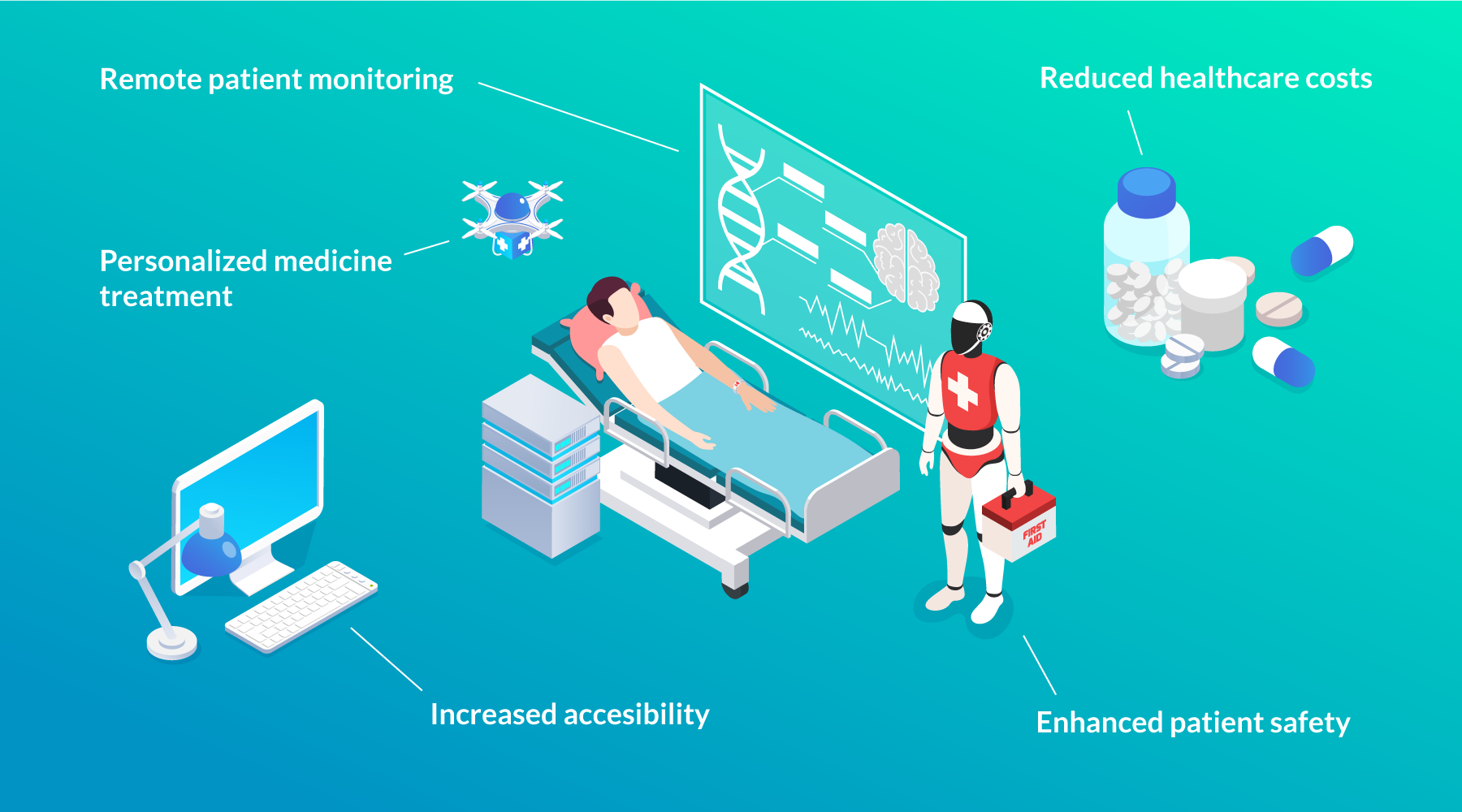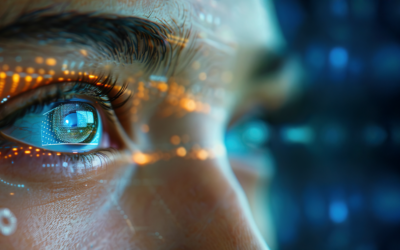5 Ways IoT is Transforming Healthcare
5 min read
Summary:
IoT is revolutionizing the healthcare industry by enabling remote patient monitoring, enhancing patient safety, reducing costs, increasing access to services, and facilitating personalized medicine. However, challenges like data security and privacy, standardization, and the digital divide need to be addressed for the full potential of IoT in healthcare to be realized.
How is IoT transforming healthcare
The Internet of Things (IoT) is revolutionizing many industries, and healthcare is no exception. Utilized in healthcare, IoT has the potential to create a pervasive environment for monitoring patient health, improving patient safety, reducing costs, and enhancing access to healthcare services. In this article, we will explore five key ways IoT is transforming the healthcare sector and discuss this technology’s challenges and future directions.
1. Remote patient monitoring
Remote patient monitoring allows healthcare professionals to track patients’ health data continuously through connected devices such as wearables, implants, and ingestible electronics. This helps in the early detection of potential health issues, resulting in timely interventions and improved patient outcomes. It also enables patients to receive care from the comfort of their own homes, reducing hospital readmissions and easing the burden on healthcare facilities. It’s worth mentioning that, in the context of remote patient monitoring, the utility of IoT really came to light during the Covid-19 pandemic, as it allowed medical personnel to do their work without patients physically attending the hospital.
2. Enhanced patient safety
IoT devices help improve patient safety by monitoring vital signs, detecting falls, and sending emergency alerts to healthcare providers. For example, smart wearables can track a patient’s heart rate, blood pressure, and oxygen levels, allowing healthcare professionals to monitor their condition and intervene when necessary. This can be particularly useful for elderly patients or those with chronic conditions who require constant monitoring.
3. Reduced healthcare costs
Properly utilized, IoT technology can lead to significant cost savings for the healthcare industry by automating various tasks and streamlining processes. For instance, IoT devices can monitor the usage and inventory of medical supplies, reducing waste and improving the efficiency of healthcare operations. Additionally, remote patient monitoring can help prevent unnecessary hospitalizations and reduce healthcare costs for both patients and providers.
4. Increased accessibility of healthcare services (telemedicine)
IoT has the potential to enhance the accessibility of healthcare services, particularly for those living in remote or underserved areas. Telemedicine solutions enabled by IoT devices can connect patients with healthcare professionals regardless of their geographic location, breaking down barriers to care and improving overall health outcomes.
5. Personalized medicine and treatment
IoT devices can collect and analyze vast amounts of health data, enabling healthcare providers to develop personalized treatment plans tailored to each patient’s needs. This leads to significantly more effective treatments, faster recovery times, and improved patient satisfaction.

Challenges and limitations
Despite the many benefits of IoT in healthcare, there are several challenges and limitations to consider. These include data security and privacy concerns, the need for standardized protocols and interoperability between devices, and the potential for technology to create a digital divide among patients with different levels of access to devices and internet connectivity. However, as a company with a holistic approach to data lifecycle, we solved entire sets of challenges regarding IoT technology, especially regarding security and privacy concerns.
Future directions
As IoT technology advances, we can expect even more innovative applications in healthcare. These include the development of smart hospitals that use IoT devices to optimize patient, staff, and inventory flow, as well as the integration of AI and machine learning to enhance data analysis and decision-making further. Moreover, the emergence of 5G networks will likely improve the speed and reliability of data transmission, paving the way for real-time remote healthcare services and more advanced applications.
Overcoming challenges
To fully realize the potential of IoT in healthcare and ensure that this incredible technology serves to better humanity, we must continue to explore its capabilities and address any challenges that arise. Here’s how we tackle them:
Data security and privacy
As IoT devices collect and transmit sensitive health data, ensuring data security and privacy is crucial. We help healthcare providers and technology developers implement robust encryption and authentication measures to protect against data breaches and unauthorized access. Compliance with data protection regulations, such as the Health Insurance Portability and Accountability Act (HIPAA), is also essential.
Standardization and interoperability
The lack of standardized protocols and the need for interoperability among IoT devices can hinder the seamless integration of technology into healthcare systems. We regularly collaborate with industry stakeholders to develop and adopt universal standards that facilitate communication between devices and support the secure exchange of health data.
Addressing the digital divide
The digital divide can worsen existing health imbalances, with patients in underserved areas or those lacking access to technology potentially missing out on the benefits of IoT in healthcare. We work with policymakers, healthcare providers, and other technology companies to address this issue by investing in digital infrastructure, increasing access to affordable devices, and promoting digital literacy among patients.
Conclusion
IoT is transforming healthcare by improving patient outcomes, reducing costs, and increasing access to care. As this technology continues to advance, we can expect even more innovative applications and solutions to emerge. However, to fully harness the potential of IoT in healthcare, it is crucial to address challenges such as data security and privacy, standardization, and the digital divide. By overcoming these obstacles, IoT can play a significant role in shaping the future of healthcare and improving the health and well-being of people around the world.
Despite its limitations, we at Innoboost are proud to be at the forefront of this revolution. We have already made significant contributions to making the application of IoT in healthcare safer and more efficient.
Even if you’re not a part of the healthcare industry, we can help you utilize IoT technology to improve your running operation, automate and secure your processes, and optimize your data collection, all to help your company grow, thrive, and offer a better service to humanity.
Contact us to schedule a meeting and learn more about how IoT can help your business.
You may also like…
Unlocking the Power of Custom AI with InstructLab
5 min readSummary In the dynamic landscape of artificial intelligence, the ability to create models tailored to unique business needs is more than a competitive edge—it's a necessity. InstructLab, a collaborative initiative from IBM and Red Hat, is revolutionizing AI...
Strengthening Authentication in the Digital Age with IBM Verify
5 min readSummary In today’s interconnected world, the importance of robust authentication systems cannot be overstated. As digitalization accelerates, safeguarding sensitive data and critical systems has become a top priority for businesses. Effective access...
From Data Chaos to Data Confidence: Real-World Use Cases of IBM Data Product Hub
5 min readSummary In a world where data streams in from every direction—transactions, patient records, supply chain logs, and more—businesses often face “data chaos.” Instead of powering innovation, their data sits scattered in different formats and systems, making it...




